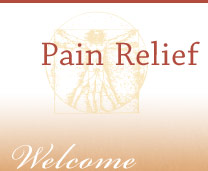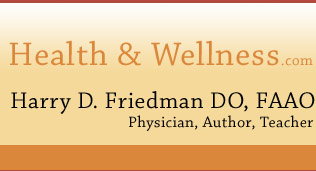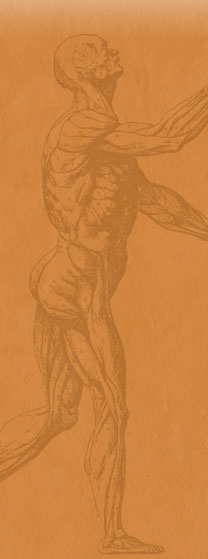 An interview with Harry D. Freidman DO, FAAO
An interview with Harry D. Freidman DO, FAAO
1. Dr. Friedman, do you like rebels? No, generally I don’t like rebels, they are usually self-centered and often destructive. On the other hand, I am somewhat of a rebel myself…. I value a principled, thoughtful approach and believe that quality teaching requires a clear and pure intention, as free from hidden and political agendas as is possible. I don’t stand for situations where deceit and manipulation are afoot… Too many people today have no real sense of a deeper purpose to their life, they may speak about it but in their hearts they are numb to what is really happening in themselves and in the world and they can only attend to what is needed for its continued denial and their survival…. Osteopathy provides for many of us a genuine opportunity to stop fixating on what we pretend is so important, and slow down enough to appreciate our essential connection to what actually is important. Modern health care needs more of this approach to recognize and learn to work with the health that is living inside us all. All true Osteopaths are rebels in this regard!
2. You write in your forward to “Functional Methods” that William Johnston “was a revolutionary, a critical thinker and philosopher with a hand on Osteopathic history and an eye on its evolution.” What did you mean by that? Dr. Johnston was highly motivated by the principles of General Systems Theory and Cybernetics, essentially the way that (living) systems work… He didn’t believe that the osteopathic lesion was a static, isolated, structural phenomenon or that its treatment required “putting it back in place”. Systems theory identifies various components of all systems that work to maintain a “set-point” of function within that system. For example, the temperature on a heating thermostat, the flight path on an airplane’s steering mechanism, or the pH of our blood…. Dr. Johnston committed his life to applying these “functional” principles to Osteopathic thinking and practice. He focused on the motor system as a highly complex organizer of total body function. Everything in the right place at the right time, in response to demands placed upon the entire body. His approach identifies dysfunction based on segmental responses to motions introduced in the whole body, treatment follows in a like manner, using whole body motions and positioning to effect segmental corrective responses. Dr. Johnston brought the Osteopathic profession into the second half of the 20th century by keeping pace with the latest discoveries in the scientific understanding of living systems.
3 & 4 You met Dr. Johnston in 1983. Dr. Johnston died in 2003. How was your relationship to William Johnston and how would you describe him as a human being? Dr. Johnston was one of my teachers and eventually became my mentor, primarily because of our shared interest in research. He was my advisor on 4 different research projects and later became my FAAO sponsor, which I obtained in March of the same year he passed away…We also developed a partnership in terms of teaching Functional Methods courses and writing the “Functional Methods” book. We always had the best of times when we got together at conferences, he was a dear friend to me, but also to so many others in our profession, including his patients. Dr. Johnston was as easy going as anyone in his academic position could get. He didn’t hold himself above anyone else, and tried to include everyone around him in the conversation or activity at hand. Dr. Johnston took particular interest in helping students develop Osteopathic palpation and problem solving skills. He didn’t try to convince you of his theories, rather he encouraged you to feel and think for yourself. He was dedicated to the Osteopathic profession and the process of its natural evolution, despite being poorly understood and underappreciated by its major constituents.
5. Which experience with Dr. Johnston has impressed you the most? This is a difficult question to answer there are so many impressive experiences I have had with Dr. Johnston…I would have to say that there is one that stands out. After the convocation where I received my FAAO, Dr. Johnston fell ill and was in the hospital. I received a call from his daughters saying that despite being in no condition to speak, he insisted on talking to me. (quite an honor, I guess) Dr. Johnston got on the phone and proceeded to tell me about a program he had developed for the Australian Osteopathic Association’s upcoming annual convocation. They had asked him to organize the entire 3-day program around using functional methods in everyday practice to do research. He asked me if I would go in his place and present the program he had developed. I, of course, said yes, but wasn’t entirely sure what I had gotten myself into, after all, I was used to doing things my own way and wasn’t sure I could pull off a “Bill Johnston” effort… Well, the program turned out to be a masterful design of teaching exam skills and record keeping protocols to the over 70 participants. They learned the skills and we had 2 operators perform blinded exams on the same subject, compared their records and discovered that we had the first study to demonstrate high inter-examiner reliability in Osteopathic methods! (This paper is currently being written and will be submitted for publication soon)
6 & 7. Do “Functional Technique’ and “Indirect Technique” mean the same thing? What is the difference between “balance and hold” “dynamic functional” and “strain and counterstain” techniques? No, absolutely not…. Indirect Technique is only a general description of various treatment methods that work away from the barrier or in the direction of ease. Functional Methods is one of these approaches and also includes a specific diagnostic approach. “Balance and Hold” techniques are things like strain/counterstrain where a position of ease is held for a period of time for the purpose of reducing tenderness in a “tender-point”. The diagnosis of these points is unique and very different from the palpatory approach of Functional approaches. The 2 other approaches are more similar, both identify dysfunction in terms of a local area of muscle hypertonus that exhibits altered mobile responses, but Dr. Johnston’s method goes into much greater motion testing detail and differentiates viscero-somatic findings. Dr. Johnston’s approach to the costal cage and the sacropelvis are unique as well, for example, he divides the sacrum into 5 functional levels corresponding to the 5 somatic nervres exiting the sacrum.
8. Johnston said that one should clearly distinguish between theory and facts when palpating musculoskeletal findings. Aren’t examination findings inevitably interpreted and solely the result of the orientation of the examiner, which findings he choices to see and which ones he ignores? What you say is true, and I agree that altered position and motion are both signs of dysfunction. Interpretation is a neurologic function of palpation (first detection, then amplification and lastly, interpretation) The essential point here is whether that interpretation is based on actual palpatory findings (refered to as ‘fact”) or on concepts. For example, Fryette’s laws say that for non-neutral mechanics, side-bending and rotation are coupled in the same direction. Well, if you think about what he is saying and check it using palpation you will find that he was referring to normal motion mechanics (without dysfunction), with dysfunction, anything is possible, and this is in fact verified with palpation, at least some of the time. The point is that you have to palpate a dysfunction to know what is really going on. Another interesting fact is that findings seen in viscero-somatic disturbances exhibit a completely unique set of responses, which can only be palpated. My Osteopathic education evolved from learning everything pretty well, thrust, articulation, muscle energy, myofascial release, strain/counterstrain, crainial, and functional. It was difficult for me to give up my attachment to some of these approaches, I was really good at them and they worked so well! But over time, I did give them up because I saw that my results with Functional were profoundly better. With Functional Methods I often find that 2 or 3 other areas of severe dysfunction resolve when I treat one primary dysfunction (particularly a viscero-somatic one) For example, when I treat a rib, I am positioning the head/neck and hips/pelvis in a way that enhances the corrective response overlying the rib where I am palpating. The result is that often dysfunctions from these other body regions disappear with the primary rib disturbance. Maybe they are all a part of the same whole body motor program?



